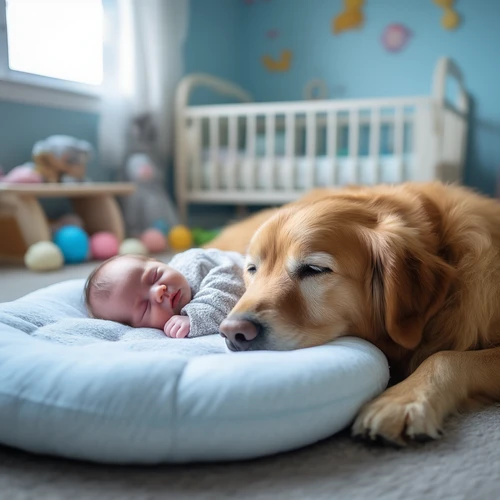Bringing a new baby home is an exciting milestone, and when you have a beloved pet as well, that joy is shared between two or three hearts. Ensuring both the infant and the animal feel safe and comfortable is essential for a harmonious household. This guide offers practical steps that help your family thrive together.
Newborns are especially vulnerable: soft toys, dangling cords, and tiny objects can become choking hazards, and fragile limbs can be easily injured by a curious or excited pet. Awareness is the first line of defense. Recognize the common risk areas in your living space, such as play mats, nursery corners, and feeding spots.
Start with a pet‑proof nursery. Install baby gates that are high enough to keep pets out of the crib, and cover any electrical outlets with secure covers. Store small objects—including pacifiers, hair pins, and small toys—out of reach. Use sturdy, non-collapsible crates or small rooms for pets if they tend to roam during the night.
Training is a powerful tool. Teach your dog or cat to respect the baby’s personal space. Use commands such as “stay,” “quiet,” and “leave it.” Reward calm behavior around the infant and avoid over‑enthusiastic play. If a pet has a history of playfully pawing at babies, consider professional training or a temporary separation until habits improve.
Supervision cannot be overstated. Even a calm pet may misjudge a newborn’s reach. When the baby is awake, keep the pet near a door or on a leash to prevent accidental bumps or snatches. Rotate time so the animal isn’t tied up, yet still remains under watchful eyes when the infant is in the same room.
Health and hygiene reduce invisible hazards. Keep your pet’s vaccinations up to date and maintain frequent grooming sessions. Clean fur and hide places that could harbor dust or allergens that might affect a newborn’s airway. Pet-proof bathrooms by ensuring no one can unscrew caps or remove small toys hidden near the sink.
Finally, develop a clear emergency plan. Know the quickest route to the nearest pediatrician for infant emergencies and the local emergency vet clinic for pet incidents. Keep a first‑aid kit for both baby and animal readily accessible. Practice safe exit strategies so you’re prepared if a sudden accident requires immediate action.
By combining careful planning, consistent training, and vigilant supervision, you create a safe, loving environment for both your child and your pet. The routine will feel natural after a few weeks, allowing everyone to enjoy a calm, secure home free from accidents.


